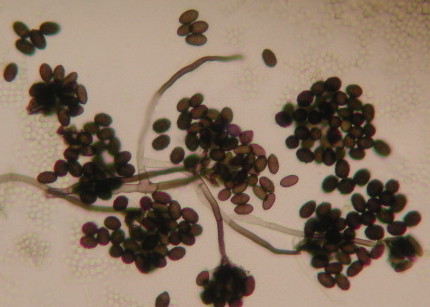Mold Laboratory
Various microscopic techniques are employed to characterize molds. The available science recognizes a few different means of classifying molds. Traditional mycological methods rely on microscopy to differentiate genus and sometimes species of molds. Generally, these techniques are used to differentiate the spores released by the mature mold colonies growing on surfaces.
There are two major categories of mold analysis: viable and non-viable. Sometimes these classifications are also referred to as culturable and non-culturable. The analytical work for both categories rely on the identification of spores by light microscopy to classify the present molds.
Viable Mold (Culturable)
- Used to grow mold from spores collected on site and takes. (Process takes up to 2-3 to grow in a lab)
- May require additional identifying factors (associated hyphae and growth patterns of colonies on select culture media).
- May require time (5-10 days) for cultures to mature enough to where they can be accurately identified.
- Our viable mold analytical services include: Airborne Fungal Spore Identification, Tape/Swab/Bulk Direct Transfer Fungal Spore Identification.
Non-Viable Mold (Non-Culturable)
- More accurately identifies the present mold.
- Spores are collected onto a slide before being sent to a lab for genus identification and concentration counting.
Why Use iATL’s Mold Lab?
- iATL uses only 1,000x magnification and oil immersion optics to qualify mold spores.
- iATL is proficient through AIHA EMPAT
- iATL is recognized and accredited as an AIHA EMLAP laboratory.
- iATL technicians are all McCrone Research Institute trained for mold analysis.
- iATL’s history of customer service and integrity.

